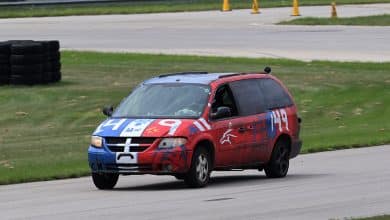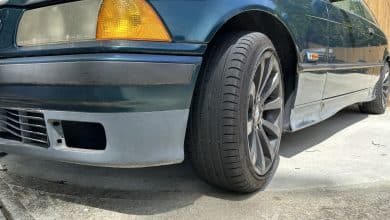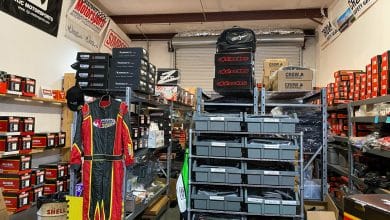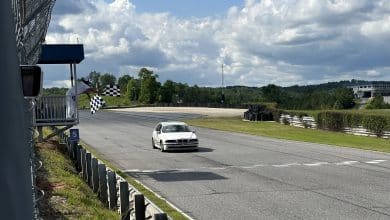Inside Look: Behind The Scenes At An Endurance Race
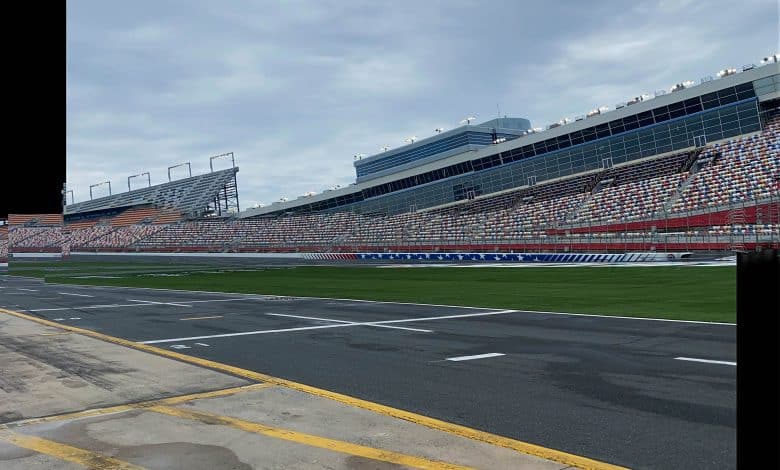
Every car enthusiast has attended a car event. But what does it actually take to plan and execute? What about something as daunting as a 3 day endurance race at one of motorsports most iconic facilities, Charlotte Motor Speedway?
I recently had the opportunity to step inside and help execute the running of the “Who Let The Dawgs Out”, Lucky Dogs Racing League’s premiere east coast event on the Roval at CMS. The event spanned three days including Friday, Saturday and Sunday for a total of 17 hours of racing.
The Series
If you are unfamiliar with Lucky Dogs they are a amateur endurance racing series focused on being driver friendly. The key focus is to allow you to build the car you want, rather than having an extensive set of class rules. They slot you into a class based on your qualifying time, so you run with like cars.
The approach is unique, and generally everyone we’ve spoken to loves the series. Many of the racers in Lucky Dogs on the east coast have cars built for 24 Hours of Lemons, Champ Car or WRL (including ourselves, but that’s another article). Lucky Dog is welcoming and fun like Lemons, but not as silly. It’s competitive like you might seek with Champ, but not as serious. It slots neatly in between for those who seek competition but who mostly are just looking to enjoy their experience.
Lucky Dogs is also billed as a non-contact series. However, that doesn’t mean there isn’t occasional contact. Just that its not encouraged. Lucky Dogs also strives to not be ‘nit picky’. They generally won’t black flag any minor tire off or incident. However, don’t confuse any of this for lacking safety rules or focus. The operators were quick to black flag cars for violation of the rules or being unsafe.
The team at Lucky Dog is based out of the Pacific Northwest and the majority of the events take place on the west coast. This series is their opportunity to build a following in the southeast and mid-atlantic.
Southern Endurance Cup

This race was part of the Carolina Endurance Cup, a 6 race series within a series across Charlotte Motor Speedway and Carolina Motorsports Park. The series has it’s own trophies and it’s own points system, with individual race and overall series cup champions crowned.
Lucky Dog’s Racing league has since renamed the series the Southern Endurance Cup. Charlotte Motor Speedway was replaced with Atlanta Motorsports Park on the schedule.
The Track
This race was run at the infamous Charlotte Motor Speedway. The iconic track hosts some of NASCARs largest events. This particular event is run on a version of the track called the Roval (combing âroadâ and âovalâ). It mixes the infield road course with the NASCAR high banked oval track. The Roval layout has been run for the last 4 years in the fall by NASCAR.
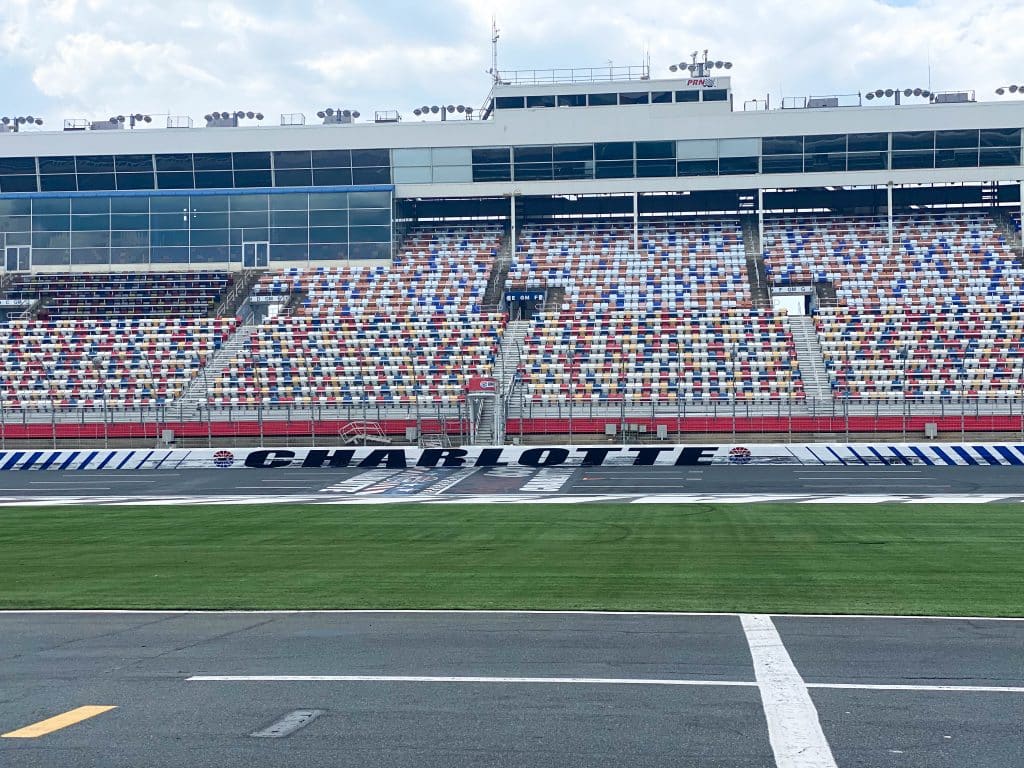
The Event
This event was two events spread across 3 days in a somewhat unique format. The first race was run 4 hours on Friday and 3 hours on Saturday. The race was essentially frozen overnight Friday night and picked up up first thing Saturday. The second race was 10 hours on Sunday.
Each of the two races were completely standalone. Each with their own standings, winnings and trophies. Plus, each race counted as points towards the overall Carolina Endurance Cup.
Parc Fermé Race
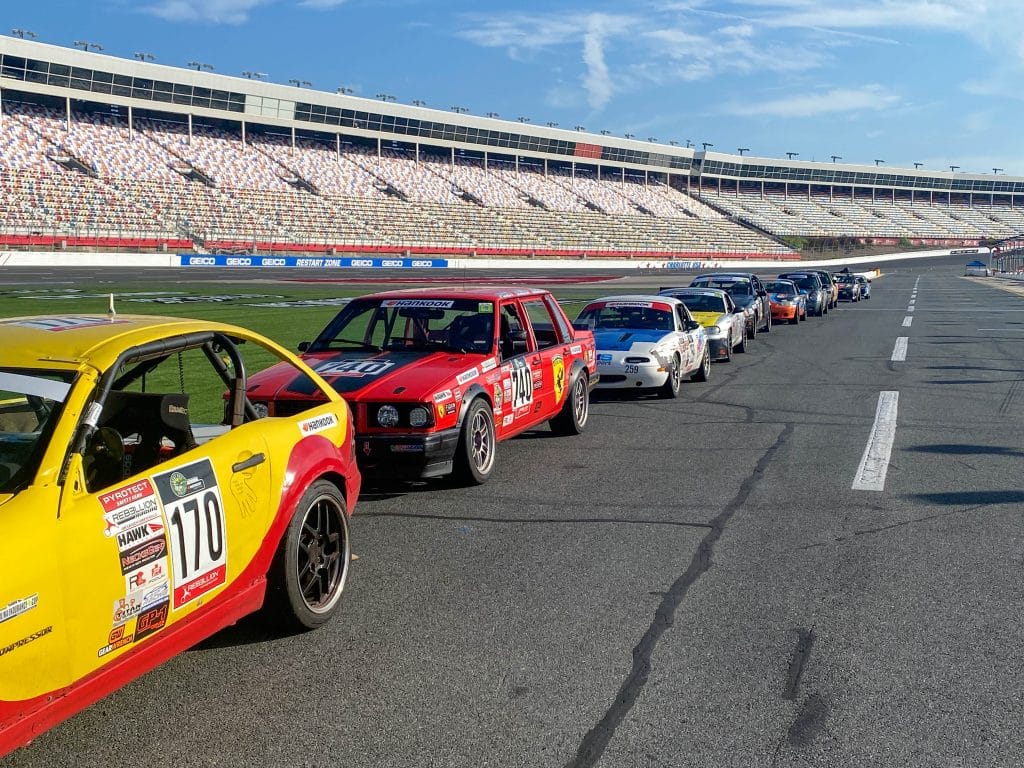
The style of overnight continuation is known as Parc fermé, which literally means closed park. It is a racing concept where essentially the cars are parked in the pits and frozen. Drivers and teams cannot fuel, fix or adjust their cars in anyway from the end of the race one night to the restart of the race the next. The cars are parked in position in the pits, drivers get out and the cars remain “untouched” overnight.
Under The Lights

Another iconic thing about this race is that Friday night and Sunday night are run under the lights. Most amateur endurance racing is run mid day. It’s generally easier and safer. While most series run a few true 24 hour races each year, they are the exception. The fact that this race was both not a 24 hour race and had significant run time under the lights was absolutely unique.
The People and Cars
Cars, Drivers and Crew
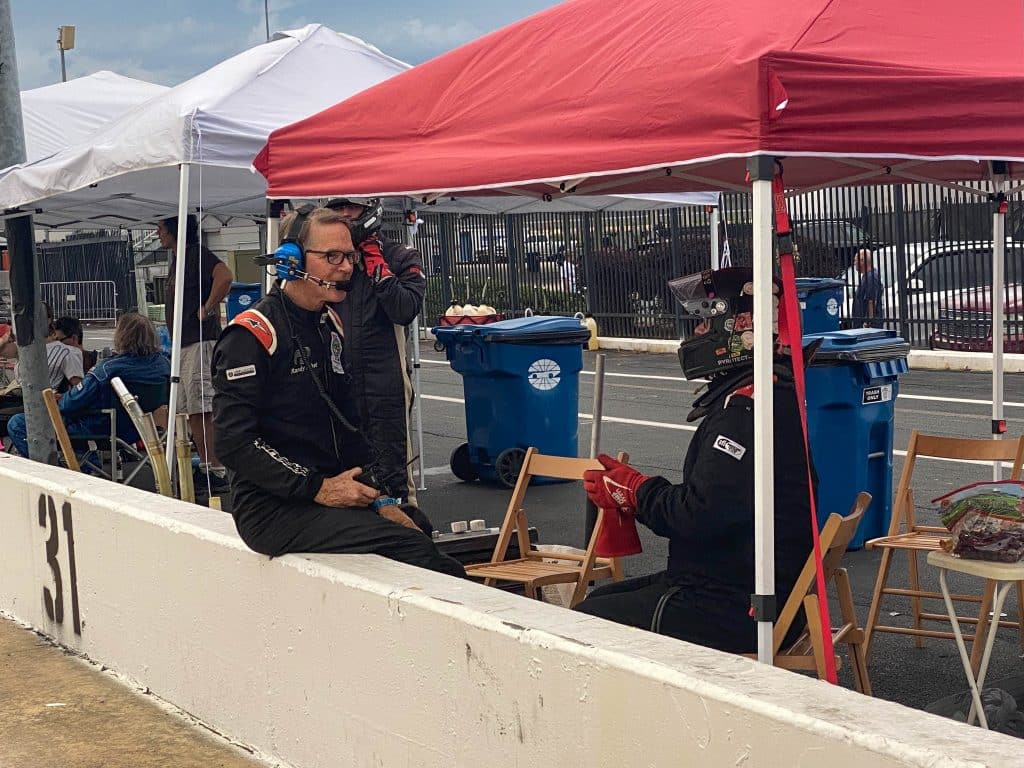
Needless to say this type of event draws drivers from a variety of backgrounds, skill levels and cars. The cars ranged from what you’d expect like Miatas, Minis and Nissan Z cars, to some you wouldn’t expect to be race cars like not one but two Volvos and several Cadalliacs. There were also unique cars like an E39 BMW 5 series powered by a Ford 302. There was even a supercharged Mercedes SLK coupe that had the craziest whine I’ve heard at an endurance race.
The teams were certainly mixed as well. Some were regular endurance race competitors. They had their teams and pit stops dialed in. There was even pro race car driver and TV personality Randy Probst running with a team. In addition a driver with the E39 team was a professional instructor with Ford Performance. She was clearly among the fastest and cleanest drivers while out on track. The level of competition here was high.
On the other end of the spectrum there were teams shaking out new cars and even a few with new drivers. While there were no teams who were made up of completely new cars and a full team of drivers, there is no question they’d fit in this series.
The Operation
Series Staff
As you can imagine it takes a lot of staff to work a series like this. It’s a coordinated effort between the Lucky Dogs team, all of whom fly in for east coast races from the West Coast. In addition the track operators themselves provide what are known as “track services” – this includes corner workers, recovery truck and ambulances.
Everyone on the Lucky Dogs staff does or did endurance racing at some point. That’s probably not much of surprise. Most of the staff do not do this full time. In fact, they often have to take time off of their day jobs for these longer weekends or when travel is involved. And none of them are likely getting rich. In fact, despite the fact that everyone seem to be happy with their pay, I’m guessing between travel and the 17 hours working during actual races plus tear down and setup time – they probably are closer to tipped volunteers than living wage employees. Still, they don’t seem to mind. This is appears to be a labor of love.
At the head of it all is Cathy Fuss. Finding female CEOs in the automotive world is rare. But Cathy has the right balance of grit and character to not only avoid any needed discussion of gender, but to actually shine. Part spokesperson, park marketer and all around socializer she leads the show and clearly trusts her team to handle the details. Still, she isn’t afraid to get involved when needed. As a testament to the team and the participants things ran extremely well and she didn’t seem to be need to get involved very often.
Race Control and Coordination
The coordination is pretty amazing. A member of the Lucky Dogs team sits in the control room keeping an eye on the track, relaying information to the track officials and watching the timing equipment. They call in track conditions such as accidents, call out black flags that are reported for contact or unsafe driver. Black flags are also routinely called due to a mechanical problem the crew can see but the driver may be unaware of. These are known as meatballs because it’s a black flag with a red circle in it.
In addition to the coordination with track officials, there are team members ensuring safe fueling in the pits, instructing drivers as they come in the pits such as mandatory pit times for fueling and who to see when there is a black flag.
At Pit Out when you are leaving the pits is where cars are checked for safety. Also there sat the pace car, waiting to go out in the event of a full course yellow. It’s also where drivers sat when given a penalty for pit violation or black flag.
The Race
This race had a field that was on the smaller side, indicative that Lucky Dogs is still building it’s following on the East Coast. Still, the team at Lucky Dogs noted that car count was up 25% YoY showing that interest in growing.
The racing was close up until the end. 1st and 2nd place in Friday/Saturdays 7 hour race was less than 2 laps. The top 6 cars were separated by less than 12 laps.
The two races also had vastly different winners. Friday/Saturdays race was won by the Mercedes SLK with Sundays overall winner was the Volvo. It’s not surprising that a team with a professional driver was able to come in first.
Still, it’s no guarantee. Randy Probst’s team finished 11th in the 1st race. A clear indicator that when it comes to amateur endurance racing it’s a team sport – car reliability, pits and fueling performance and overall team capabilities matter.
Incidents
While safety is always a priority at these events, endurance racing is almost never without incident. This race was no exception. Since Lucky Dogs runs as a no-contact series there are less incidents than you may find in more aggressive racing, these cars are still being pushed to their limits. Sometimes, the drivers as well.
Still the race overall was very clean. Most often if the recovery truck was on track it was due to a broken car. There were only two full course yellows, generally the sign of a more significant wreck. But the day wasn’t without incidents and one unfortunate team had most of the most memorable incidents. However, the resilience is part of what sets endurance racing apart.
Lost Wheel
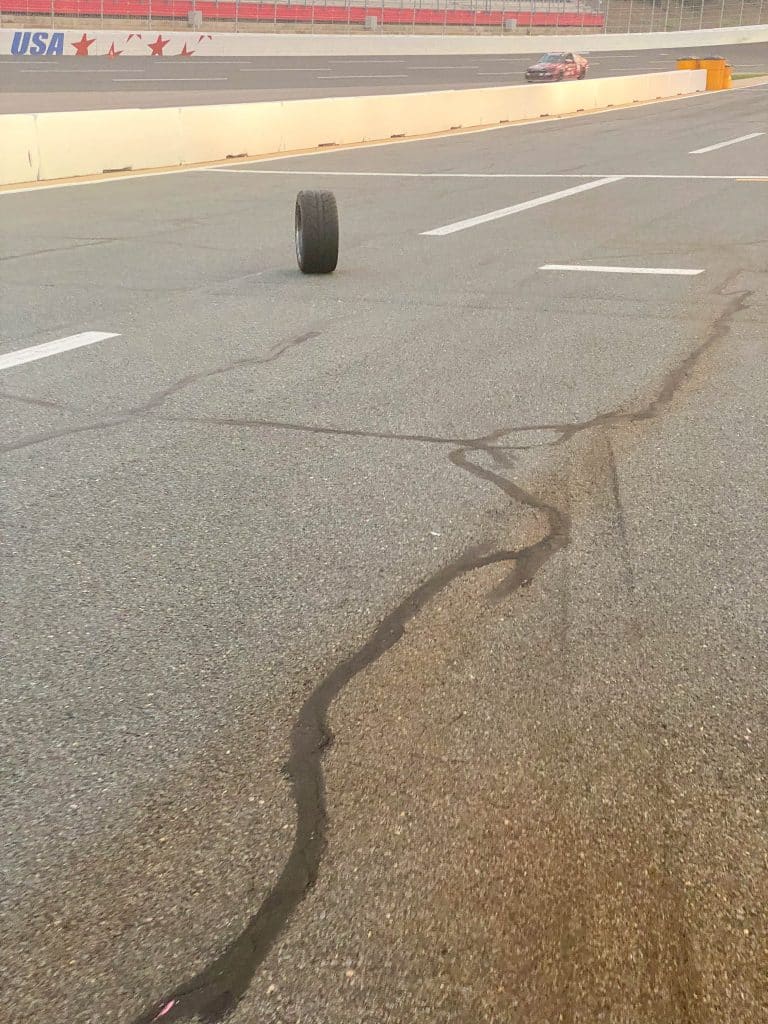
What began as the first incident of many for one of the fastest cars on track during this event, it’s always an unusual and uneasy site when a tire and wheel comes into the pits without a car attached. The wheel studs had begun backing off. The driver felt the wheel coming loose and headed into the pits – and it turns out it was just in the nick of time. The wheel came completely off as the driver pulled up to pit in. The wheel continued 50 feet down the pits.
The crew was able to repair the car. When the wheel came off the car drug on it’s hub. While the brakes were spared the entire hub needed to be replaced to get back out on track.
The Wreck
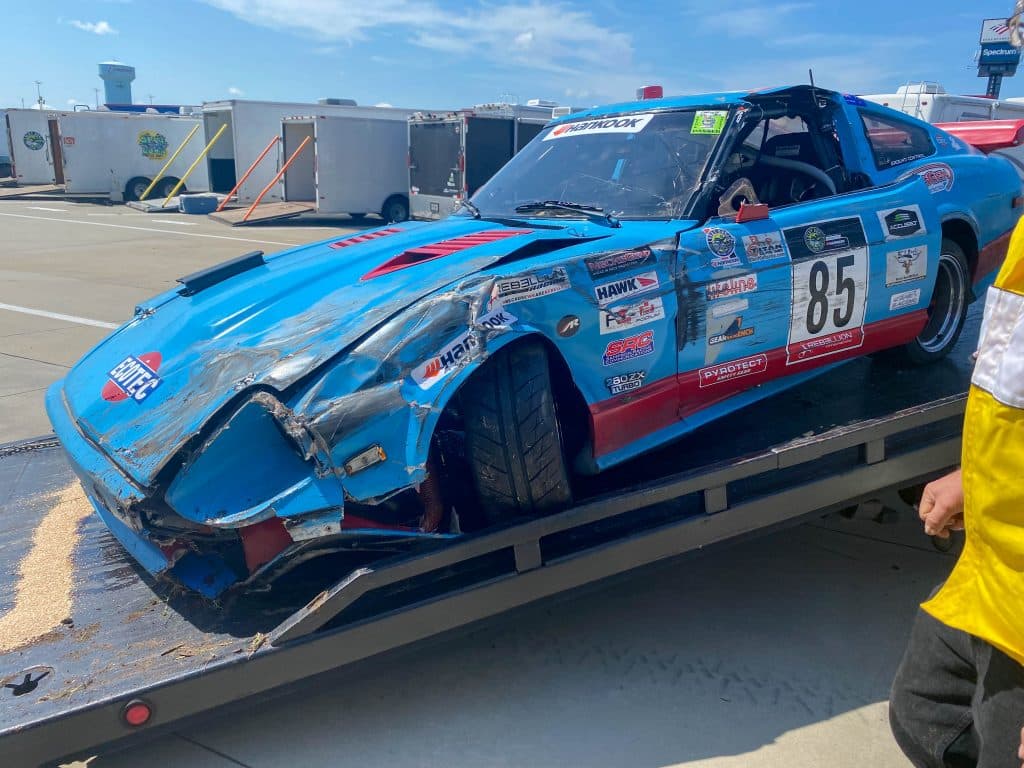
The next day the same car suffered the most severe on track incident of the weekend. The Nissan Z car lost control shortly after passing the start finish on a lap. The car veered straight into the wall. The damage was extensive. The drivers front wheel pointed 90 degrees off from the other wheels. Thankfully the driver though shaken up, was fine.
The wrecked car was towed into the pits. It was so badly damaged they had to drag the car off of the flat bed with another truck. It was leaking fluid everywhere. It appeared this cars weekend was done.
The Recovery
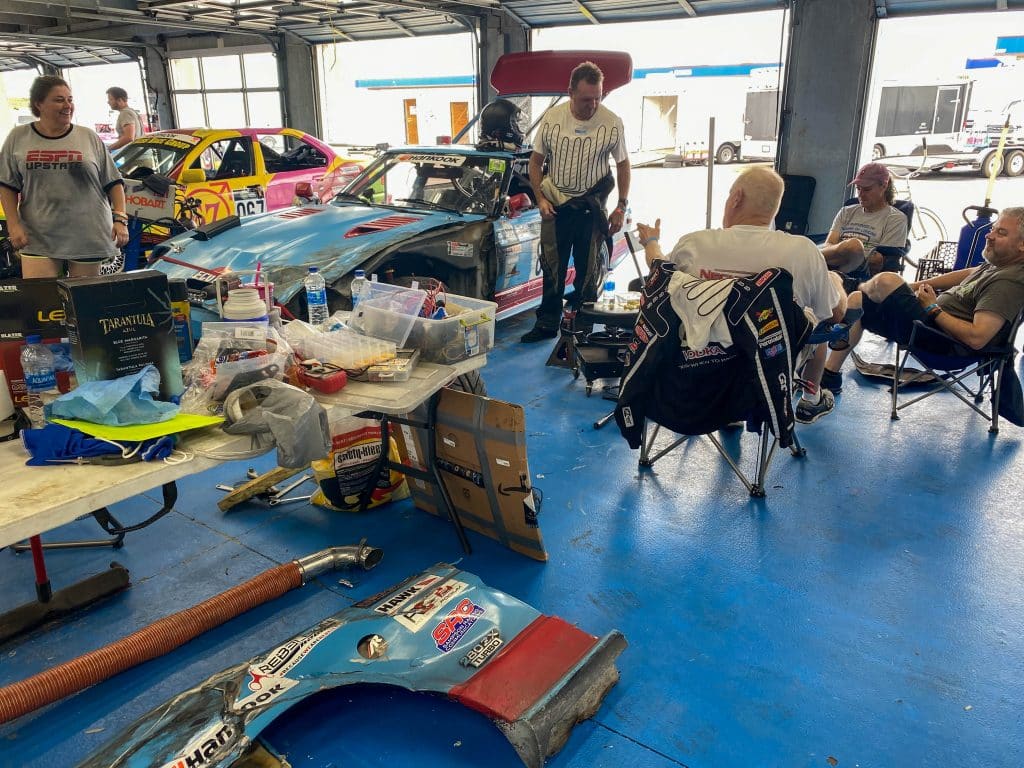
The team didn’t expect to be able to race any further, but after a short cooling off period they got to work. They fixed the leaking radiator, removed the fender, replaced the broken suspension pieces and hub. Surprisingly, they were back out racing for Sunday’s race.
The Emergency
There was one true emergency of the weekend. A team on the far end of the garages was working on their car. A crew member opened the radiator cap while the car was still hot and received a blast of radiator water to the face.
The Lucky Dogs staff immediately called an emergency over the radio and requested the rescue ambulance. While I didn’t personally witness it I was told by other teams that the burns to the face were significant and concerning. The injured crew member was taken to an area hospital. The race was not interrupted but it certainly caused a stir.
About Me
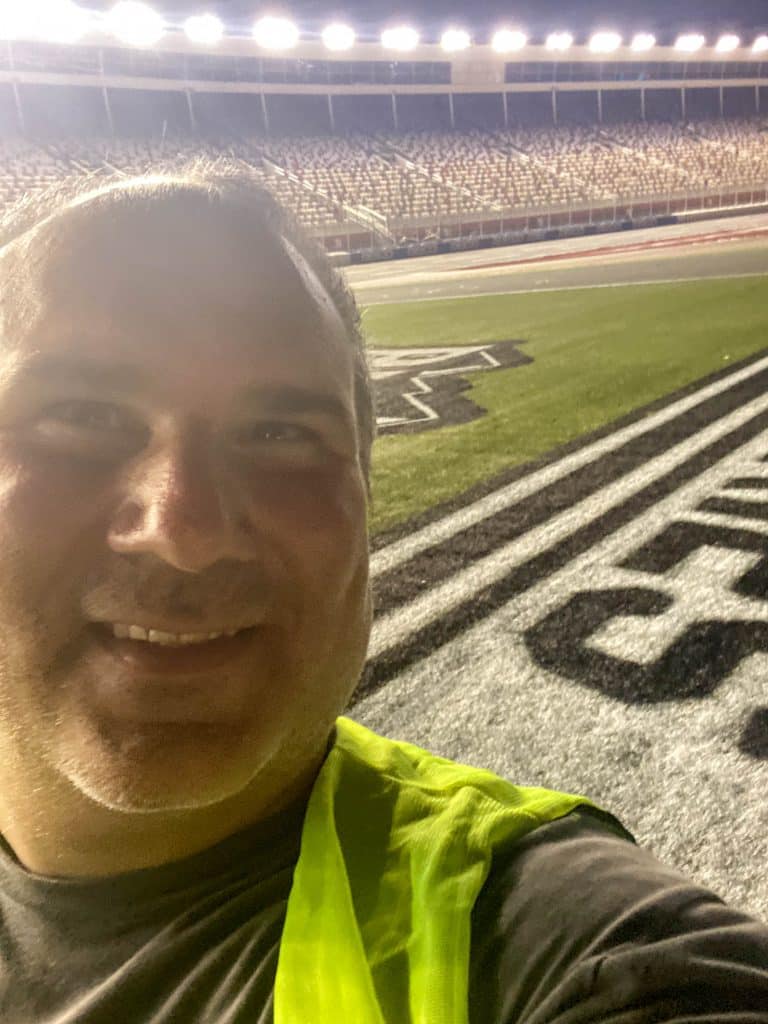
I’m an avid car enthusiast and have been for decades. I’ve been active in the Atlanta car scene since I could drive. I’ve done drag racing, track days and endurance racing. I’m a founding member and crew chief for 24 Hours Of Lemons/Lucky Dog Team Nein Blinker. I also raced Lucky Dogs Carolina Endurance Cup race at Carolina Motorsports Park.

In addition I was a founder and President for 14 years of Import Showdown, Georgia’s largest non-professional drag racing event. As part of Import Showdown series we also put on 3 Import Showdown Track Days so I’ve operated road course events as well.
I volunteered to work this Lucky Dog race for three reasons:
- I wanted the opportunity to go inside running an endurance race. I’ve participated but wanted to see what was involved operating it.
- I truly have enjoyed the Lucky Dog series. I couldn’t drive this event so I wanted to find another way to support and encourage them to grow the series in the southeast. The way the leadership operates it and the types of teams it draws, at least on the East Coast, fit with my style – competitive spirit but focused on fun.
- Having operated track days and drag races I know how hard it is to find paid and volunteer help. It was the most painful part of running the events. When I heard they routinely were short help I wanted to contribute while I had the opportunity.
My volunteer role was Pit Marshaling. It primarily included making sure nobody violated refueling rules. I must handed out advice and warnings, trying to limit being a part of the race by being heavy handed with penalties. Still a few times incidents were so egregious it warranted penalties. In addition I had the opportunity to work Pit In notifying cars they were black flagged or placing fueling timers as teams came in.
I had a blast getting to meet and talk with the team behind the race and learning a little more about them. I also loved the opportunity to talk to the different teams at the race. When running the race you talk to the teams in the garages around you and in the pits next to you, but you don’t get to see the same complete picture.
It was also great to see some of the teams we saw at CMP back for Charlotte. I certainly hope the folks at Lucky Dogs continue to grow and invest in events in the southeast. I also hope more and more teams – both from other series and new teams give the series a try.


